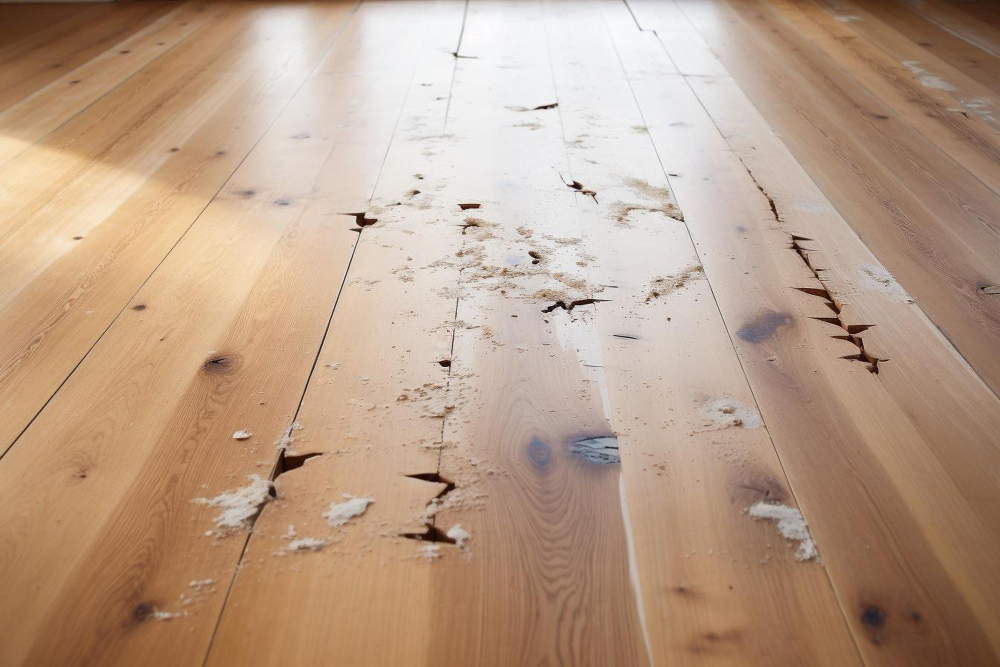What Are the Signs Of Termite Damage to Laminates and Floor Tiles?
- Aug 19, 2024
 What Are the Signs Of Termite Damage to Laminates and Floor Tiles?
What Are the Signs Of Termite Damage to Laminates and Floor Tiles?
For most homeowners, the first signs of termite problems are usually noticed on walls and ceilings. While these are the most common places for termites to build nests, there are other parts of the house where the early signs of an infestation may appear. Floors are where early signs of termites are often seen. Damaged laminate and tiles could be a sign of a termite infestation.
Laminate
The signs of water and termite damage to laminate flooring are similar. The laminate will bubble up in some places and start to sag in others. This combination of bubbling and sagging may cause the floor to appear corrugated. If the cause of the problem is termites, the floor supports or subfloor may also be damaged, which can cause the area of sagging to spread. Placing a heavy object on the floor where it sags could cause squeaking sounds. Once an area of laminate becomes damaged, the whole laminate cover will have to be replaced and the floor underneath checked for damage. When laminate is removed, if a network of tiny tunnels is seen, that will confirm the presence of termites. The insects build these tunnels to allow them to move around undetected.
Tiles
Loose tiles are a fairly common problem. Not only is the beauty of the floor damaged, these tiles are a tripping hazard that can be dangerous. One cause of the tiles becoming loose is the presence of termites. If termites begin to eat wooden flooring below the tiles, that can allow moisture to get into the wood. This dampness can cause the adhesive that holds the tiles in place to become weak so the tiles slip out of position. When the tiles remain moist for a length of time, they can start to warp. The early signs of tile damage are often not visible, but when a person stands on them causes the tiles to wobble or move, it is a problem that requires urgent investigation.
Also Read: How Fast Can Termites Damage a House?
- Soft pliable tiles such as those made out of vinyl are more prone to become loose due to termite damage. This is because they usually come with an adhesive coating and are simply put in place after removing the backing tape, leaving minute openings for termite entry. Air then gets in and causes the bubbles to form.
- Tiles made of laminate wood or parquet are more prone to absorbing moisture and warping. Termites do not produce moisture but they are attracted to it. A slight amount of dampness can quickly spread to a large area if the wood flooring is eaten and weakened by termites.
There are many possible causes of laminate and tile damage. Knowing the reason for the damage is vital so that the right fix can be applied. Termite damage is often extremely difficult to spot which is why, if you see signs of damaged flooring, contact one of the leading local termite companies without delay. If the cause is termites, then the sooner they are exterminated, the less damage they will cause and the easier the repair. Your best resource for dealing with termites, in any part of the house, not just floors, is Hi-Tech Termite Control, the leading termite company in Southern California which will give you the long-term results of termite control you are looking for.
Frequently Asked Questions
1. What are the signs of termite damage to laminate flooring?
Signs include bubbling, sagging, and a corrugated appearance. If you see tiny tunnels when the laminate is removed, that confirms the presence of termites.
2. How can I tell if my floor tiles are damaged by termites?
Loose tiles that wobble or move when stood on may indicate termite damage. Moisture weakening the adhesive can cause tiles to become loose and potentially warp.
3. Why do laminate and vinyl tiles become loose due to termites?
Termites can eat the wooden flooring beneath the tiles, allowing moisture to enter, which weakens the adhesive and causes the tiles to slip out of position.
4. Can termite damage affect the adhesive of floor tiles?
Yes, moisture from termite damage can weaken the adhesive that holds tiles in place, leading to loose or wobbly tiles.
5. What should I do if I notice damaged flooring?
If you see signs of damaged flooring, contact a local termite control company immediately to investigate and address any potential termite infestations.
6. Is it possible for termite damage to be difficult to spot?
Yes, termite damage is often hard to detect until significant damage occurs. Regular inspections are essential to catch infestations early.

Comments - 0